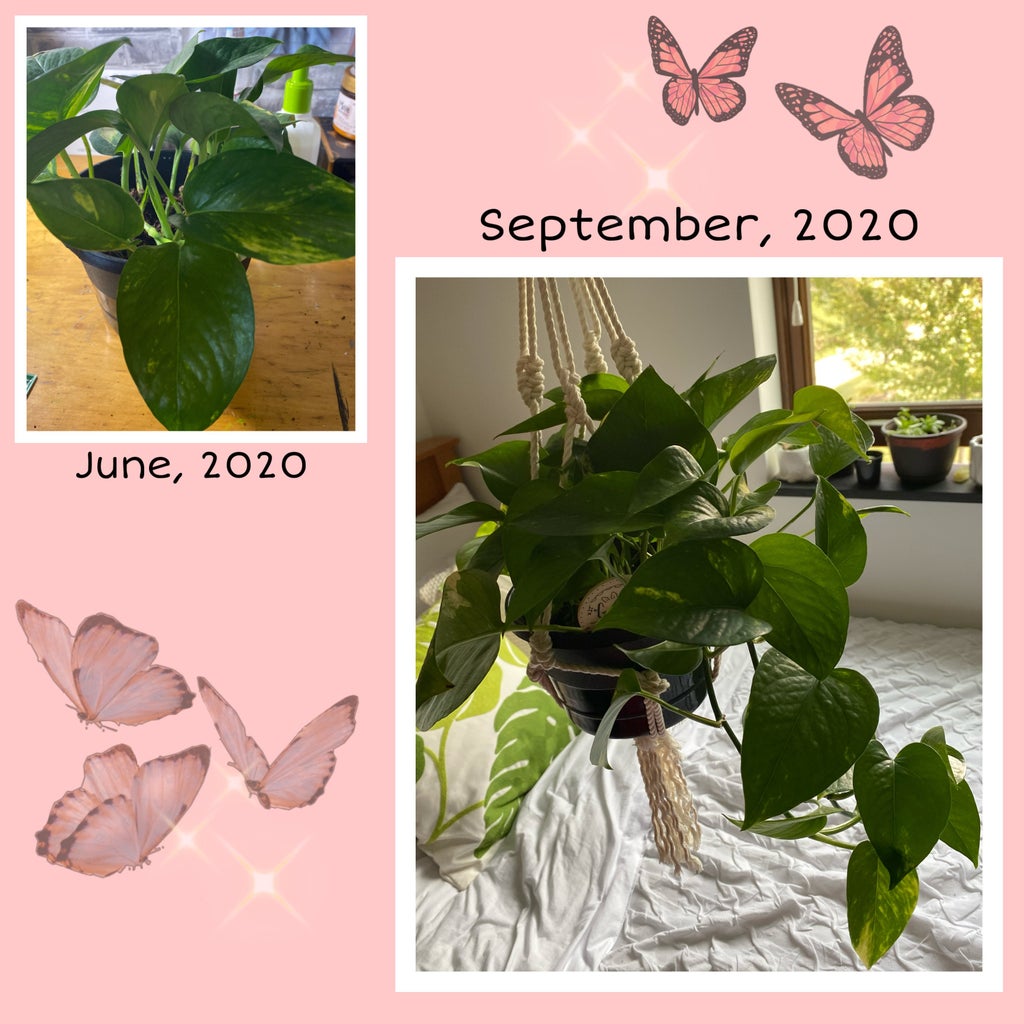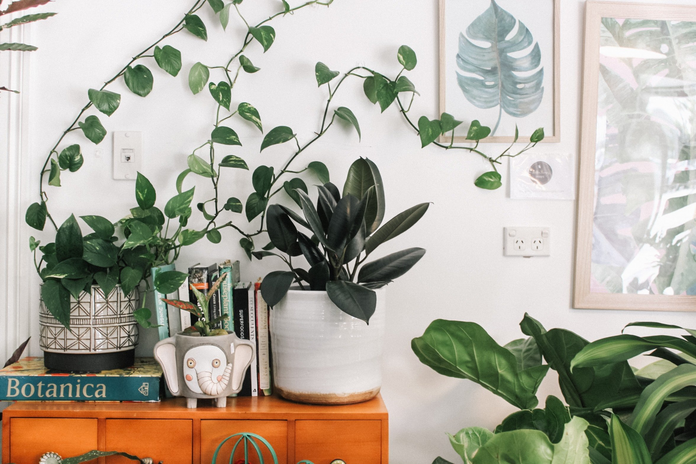A lot of people are notorious for having a so-called “black thumb.” This means that no matter what plant they buy, they always end up killing it. When I first started getting house plants, I thought I was one of those people. I had killed multiple hardy plants, like succulents and ivy, which are supposed to be hard to kill. I thought there was no use trying to keep plants anymore. It always just made me sad when they died.
So, I started doing research and learned more about plant anatomy. I found out the specific signs to look out for – when they may need water or if they’ve had too much water, and if they are receiving too much or not enough sunlight. I’m here to teach you about houseplants in a way that’s easily understood.
This is a guide for people who have black thumbs and want to own plants — let’s go!
1. What kind of plants should you be looking out for?
Some plants are easy to care for and some are a true challenge to keep alive. In my experience, the best plants for beginners are Snake Plants (Dracaena trifasciata), Golden Pothos (Epipremnum aureum), and Spider Plants (Chlorophytum comosum), respectively. With snake plants being the easiest, they thrive in low light conditions with minimal water. They’re basically the plant that you can keep in a bedroom and just forget about, only remembering they exist once a month or so. The main problem people experience with snake plants is over-watering. Neglect is their best friend. Golden pothos (pictured below) is a very rewarding plant because they grow so quickly. As long as they get a good amount of water every other week or so, they start to trail and get very long. They are toxic to animals though so make sure to keep them away from any pets. They are really beautiful plants and the golden variety has incredible variation in the leaves. Finally, spider plants can tolerate a lot of neglect as well. I’ve learned from my mistake with spider plants that they do not like direct sunlight. Too much sun can burn the tips of their leaves. They also love to be rootbound so don’t re-pot them until they’re bursting out of their pots. Spider plants only need to be watered once every other week as well. They are also pet friendly, so there’s no harm in having them around.

2. What Do Browning Leaves Mean?
If you happen to notice that your plant’s leaves are turning brown, there’s no reason to panic. Browning leaves can mean a couple things, but the main reason this would happen is because of too much sunlight. Many plants can get “sunburned” if they are in direct sunlight for too long. If this occurs it can stop the plant from growing because it is expending all of its energy to try to repair the burn. The best thing to do is to remove the browned leaves as close to the stem as possible and move them out of the light.
3. What About Yellow Leaves?
A lot of problems that people seem to have when it comes to plants is over-loving them. I was notorious for this at first as well. Most plants don’t need to be watered constantly, and doing so actually does more harm than good. If you notice the leaves of your plants turning yellow, it’s most likely because you’re overwatering them and they are drowning. Too much water can cause root rot which, ultimately, kills the plant. If you notice your plant turning yellow and dying, avoid watering it for a few days. If it still doesn’t look better, maybe it’s time to check out the roots and cut off the rotten ones.
4. So When Should I Water Them Then?
The general rule of thumb with plants is to water them when the top inch and a half of the soil is dry. You could get a moisture meter to determine this if you wanted to. You basically just take the meter and push it into the soil so it can read the moisture of the soil. If you don’t want to buy one, a good way to tell is to just stick your finger in the soil. If you can stick the whole first segment of your finger in the soil and not feel any moisture, it’s a good idea to water. If you still feel moisture, then don’t. This doesn’t apply to every plant, of course. There are obviously some plants that love to be watered constantly. Peace Lilies, for instance, like their soil to be constantly moist. The best thing to do is to research the specific plant you want to get and learn how much water they like.
5. Let’s Talk About Fertilizer.
A lot of soil mixes come with fertilizer in them which takes a lot of the hassle away. This can cause a problem during resting periods for plants though. In the winter, many plants do not like to be fertilized. So, I’d say avoid soil with fertilizer already in it. There are actually many ways to use household items as fertilizer for your plants. The one I am going to try out next are egg shells. The research I’ve done suggests that plants need calcium to help them build their cell walls. Eggshells provide them with the calcium they need. Coffee grounds are also good fertilizer for some plants. Of course, you can always just buy fertilizer from the store, but reusing food waste around your house is better for the environment! Again, just make sure to do your research into what your plant likes best.

Overall, owning plants has brought a lot of joy into my life. Waking up and seeing my plants soaking in the sun and thriving is a great feeling. They brighten a room entirely. Rehabilitating plants and seeing them completely transform is so rewarding as well. Owning plants is so worth it. I love my small jungle of a room that I have now.


